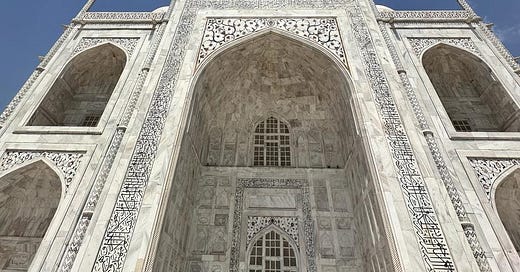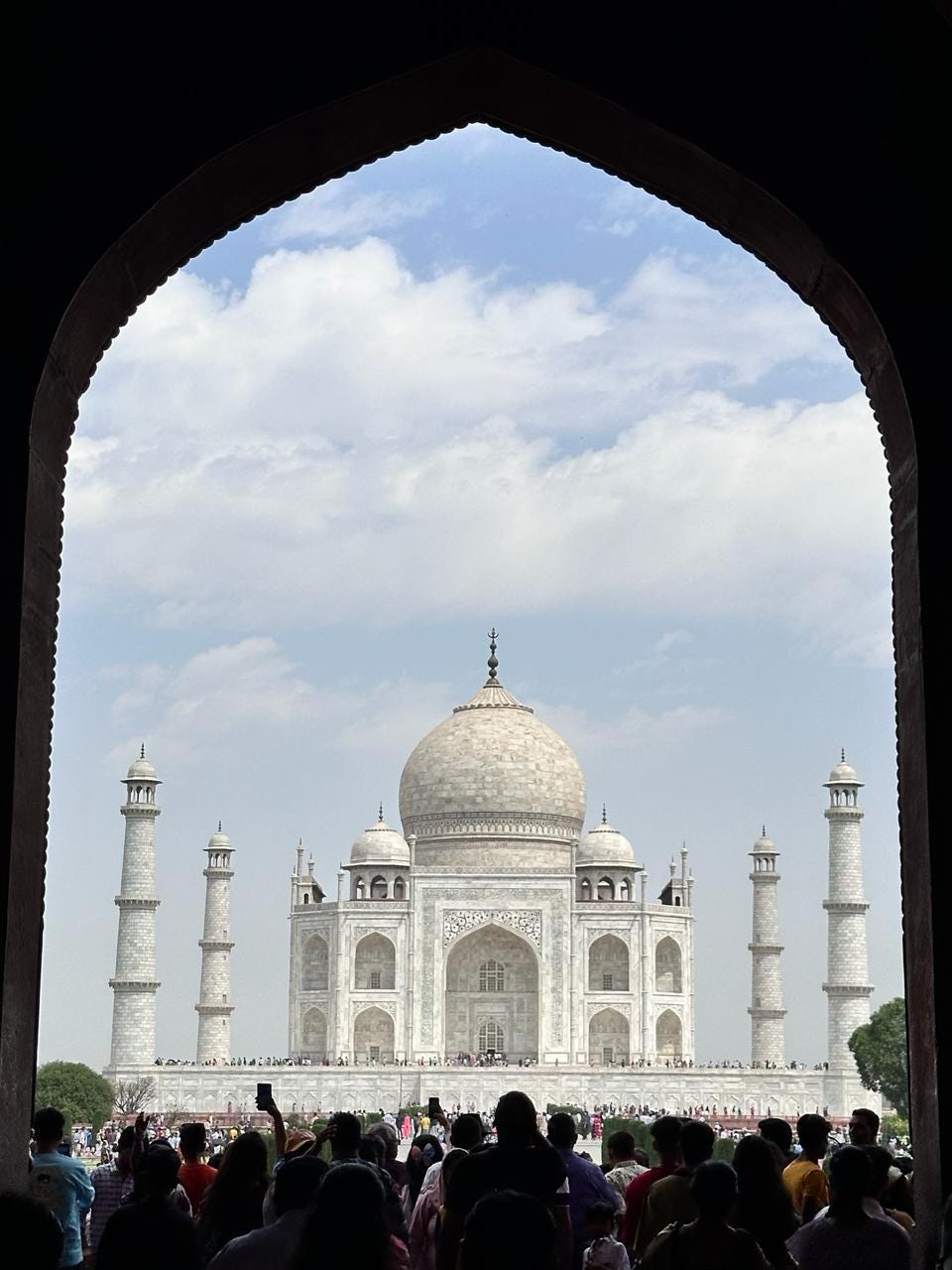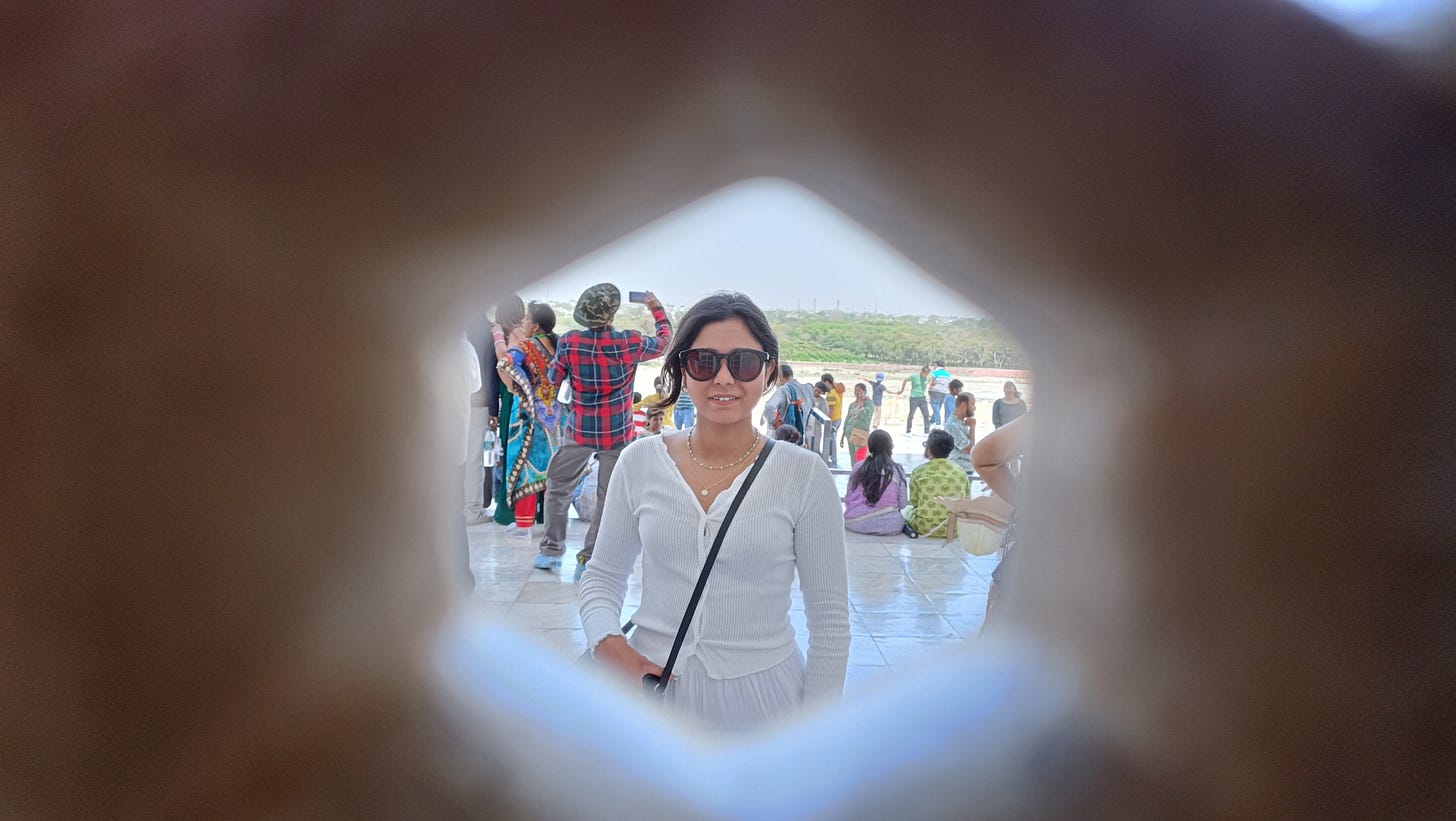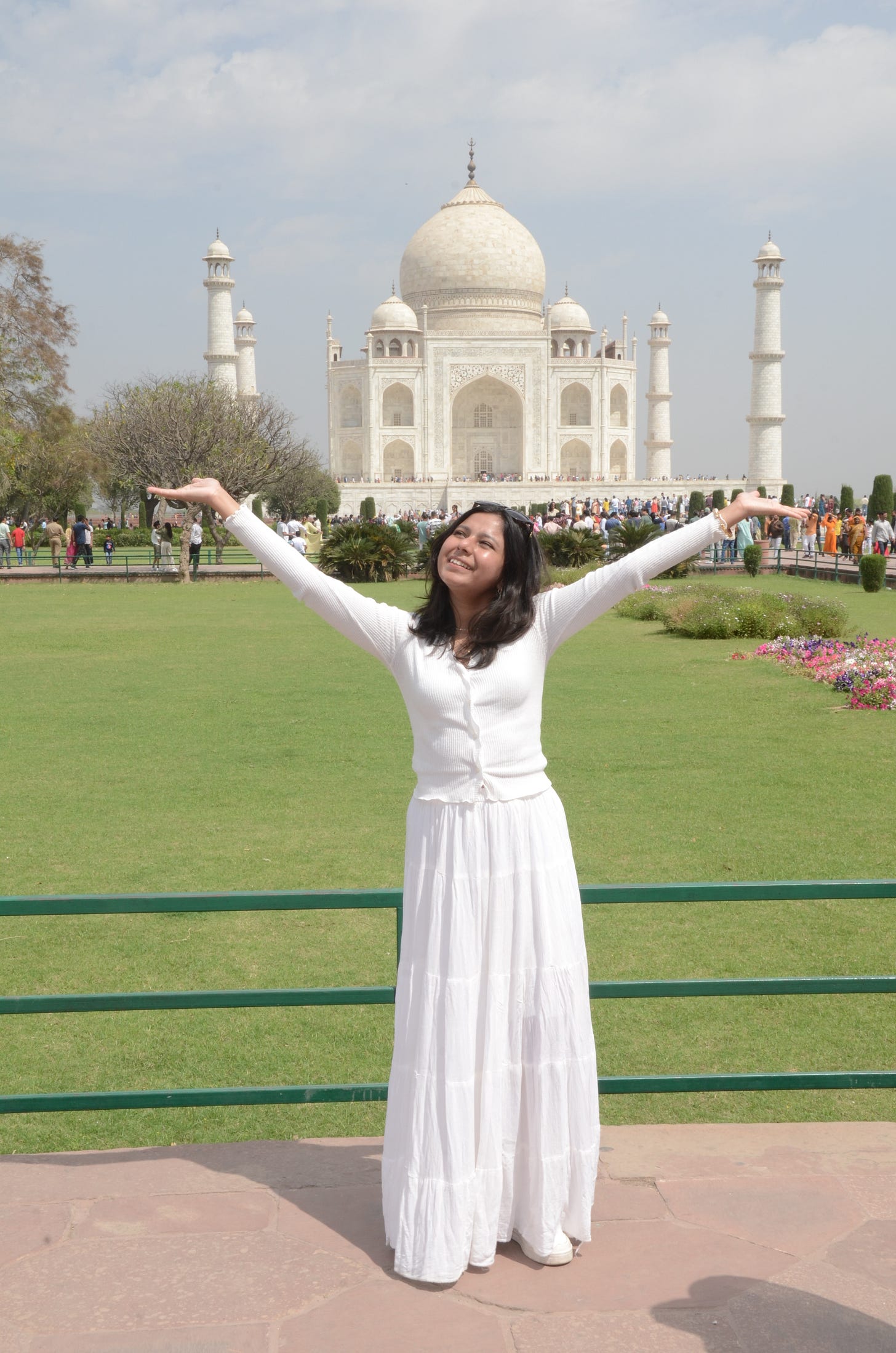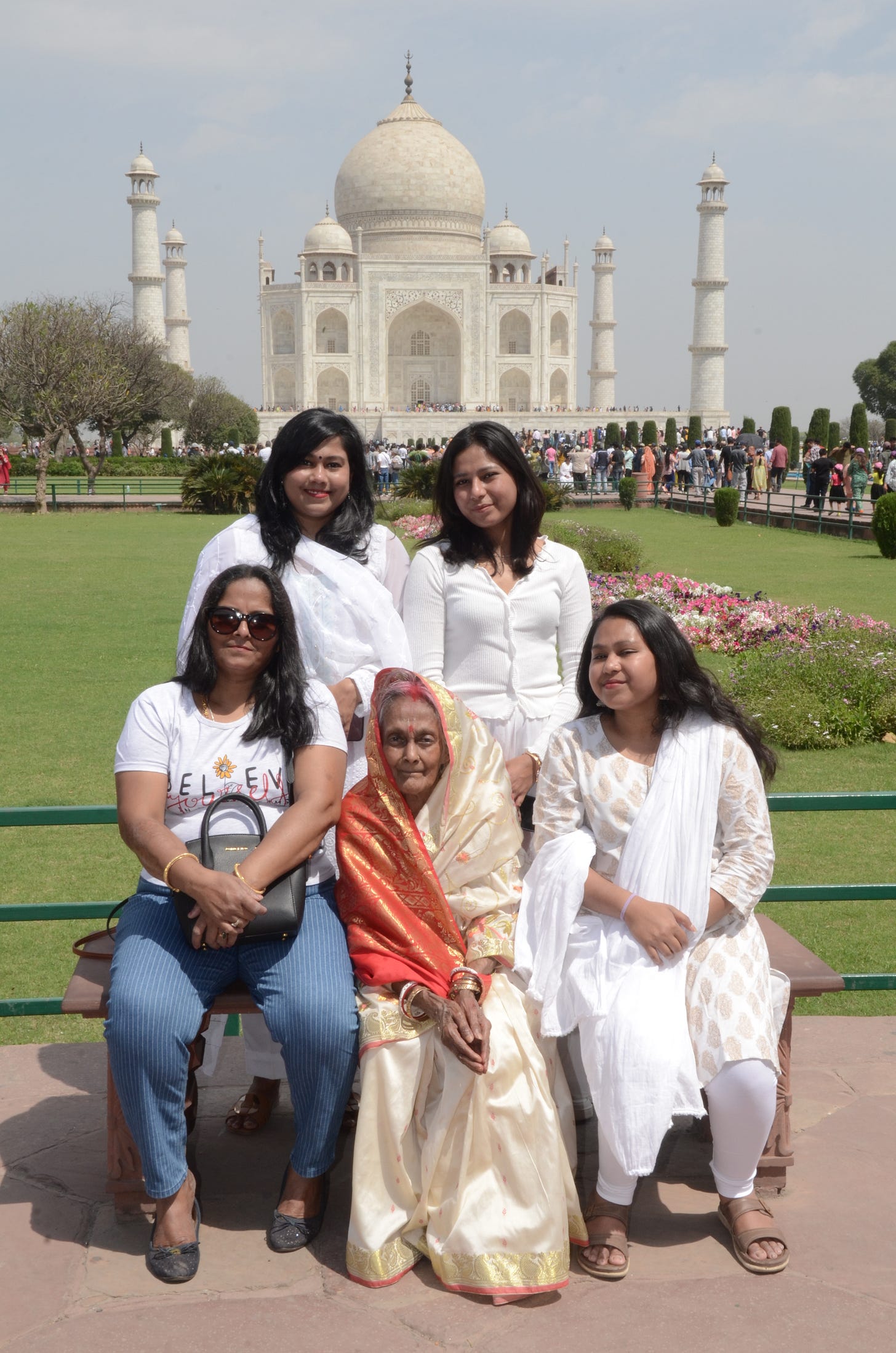What is the best time to visit the Taj Mahal? - A story
Today’s story is about my visit to the Taj Mahal last month. It was a warm summer day on 30th March 2024. Unbearable heat, sweaty and crowded.
Hey fellas,
Today’s story is about my visit to the Taj Mahal last month. It was a warm summer day on 30th March 2024. Unbearable heat, sweaty and crowded.
I had visited the Taj Mahal before back in November 2021 but it didn’t feel as intolerable as my recent trip in March.
The best part though? —— we hired a guide to tell us the story. Something I didn’t opt for on my last visit.
He gave us so many insights about the beautiful, majestic Taj Mahal.
The 11 domes on top of the Taj Mahal signify the number of years it took to build.
The Eastern Gate is only for VIP entries like presidents, celebrities etc.
The inside of the Taj Mahal contains the tombs of Shah Jahan and Mumtaz. However, those are only replicas and the real tombs are kept underneath the “Mahal”.
The 53 fountains outside the Taj Mahal signify the year of completion (1653) and has been installed as a memory. The fountains were operated by men with the help of wheels. Now machines have been installed to operate the fountains. The water used in the fountain is from the Yamuna River.
The VIP bench at the Taj Mahal gained widespread recognition as the "Princess Lady Diana Bench" following Lady Diana's visit in 1992.
When someone entered the Taj Mahal, drums were played as a way to alert the palace. These drums were situated in the Drum Palace.
The four pillars surrounding the Taj Mahal are intentionally inclined outward at an angle of two degrees from the main structure. This architectural feature was ingeniously designed to safeguard the integrity of the monument in the event of natural calamities such as earthquakes. The pillars would fall on the outside in such events —- an interesting way to stay ahead of even natural disasters.
The black writing on the side walls of the Taj Mahal is in Arabic.
The colour of the Taj Mahal changes according to the different times of the day —- the sunrise view, the sunset view and the moonlight view. During the sunrise view, the colour of the Taj Mahal appears pink, in the sunset view it appears orange and in the moonlight view it appears milky white.
The most interesting part about the Taj Mahal is that the red marbles embedded in the Taj Mahal glow when exposed to light. And that’s also how you know its real marble.
I think the grandness of this monument cannot be felt without a visit. Despite the scorching heat, we were mesmerized by the stories and intricacies that went behind building this world-famous monument. It feels surreal sometimes how a monument as grand as this was once walked by the King of India. And now 1000 of years later, it has taken a place in history. Everyone can visit it now no matter where you come from—- something that was unthinkable in 1653.
What to wear?
The outfits — coincidentally we were all in white. I was accompanied by my sisters, my mother and grandmother. I wore a white top and a long cotton skirt thrifted from a local market (Sarojini Nagar) in Delhi, a pair of sunglasses, a pair of white converses and a black sling bag. For jewellery, I chose a beaded boho necklace and a stone charm necklace paired together to complete the look.
I would recommend wearing linen or cotton clothing to curb the heat. And during winter months you may want to consider taking a coat since it gets chilly during the night while returning. (This will be based on your plans)
When is the best time to visit the Taj Mahal?
If you are visiting during the summer months, you might want to rethink your decision. If this is the case, be sure to carry sunglasses, an umbrella and a water bottle.
The winter months are much more forgiving — November - December. There will be sun but it is bearable.
Up Next
Next week, I will talk about my visit to Fatehpur-Sikri. Another castle, not too far away from the Taj Mahal.

